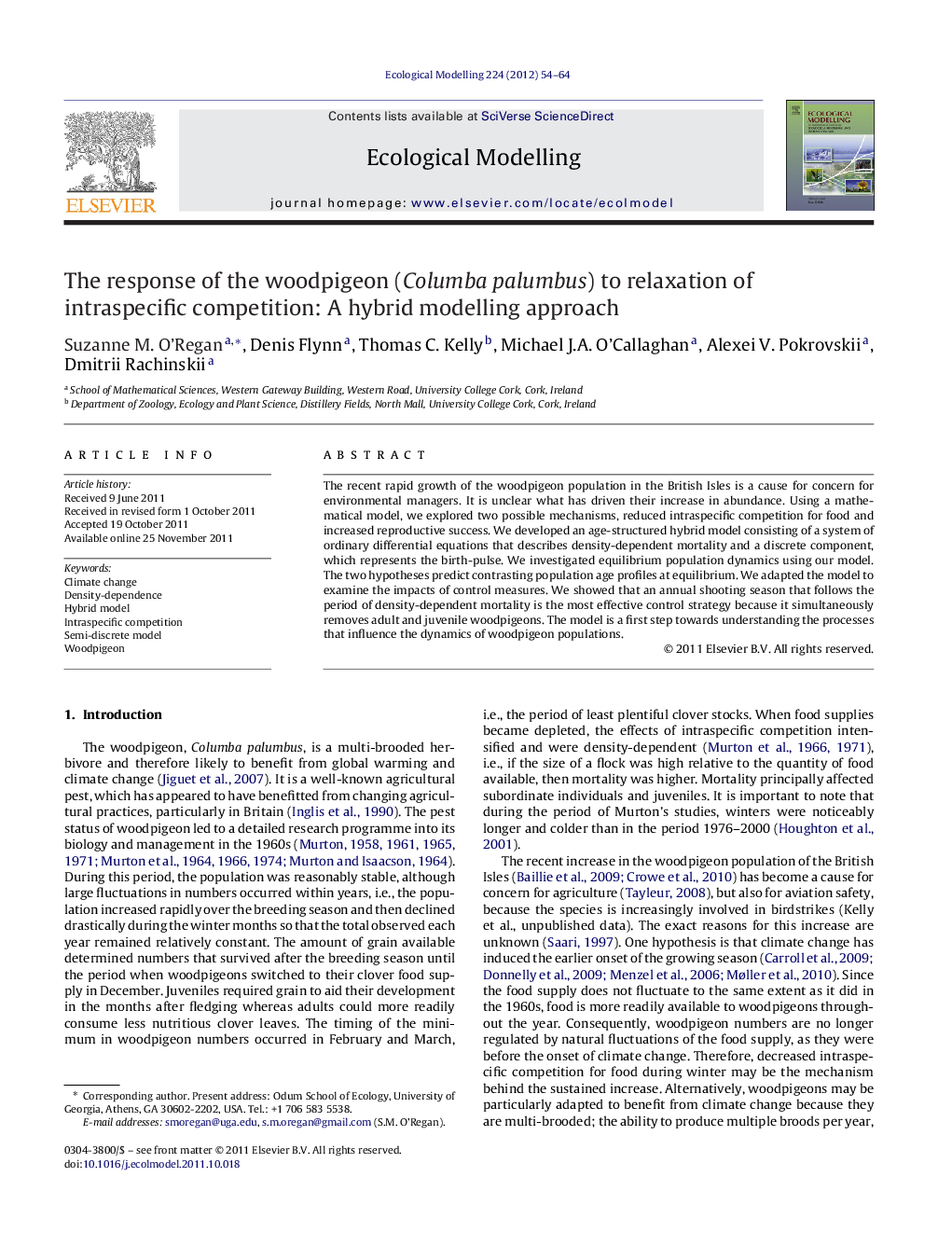| Article ID | Journal | Published Year | Pages | File Type |
|---|---|---|---|---|
| 4376636 | Ecological Modelling | 2012 | 11 Pages |
The recent rapid growth of the woodpigeon population in the British Isles is a cause for concern for environmental managers. It is unclear what has driven their increase in abundance. Using a mathematical model, we explored two possible mechanisms, reduced intraspecific competition for food and increased reproductive success. We developed an age-structured hybrid model consisting of a system of ordinary differential equations that describes density-dependent mortality and a discrete component, which represents the birth-pulse. We investigated equilibrium population dynamics using our model. The two hypotheses predict contrasting population age profiles at equilibrium. We adapted the model to examine the impacts of control measures. We showed that an annual shooting season that follows the period of density-dependent mortality is the most effective control strategy because it simultaneously removes adult and juvenile woodpigeons. The model is a first step towards understanding the processes that influence the dynamics of woodpigeon populations.
► The woodpigeon population of the British Isles has recently increased in number. ► To identify the mechanisms behind the sustained growth, we developed a hybrid model. ► A hypothesis for the increase is a reduction in density-dependent mortality in winter. ► This predicts a different age profile to that of increased reproductive success. ► Our simple dynamical model elucidates the processes that affect woodpigeon dynamics.
